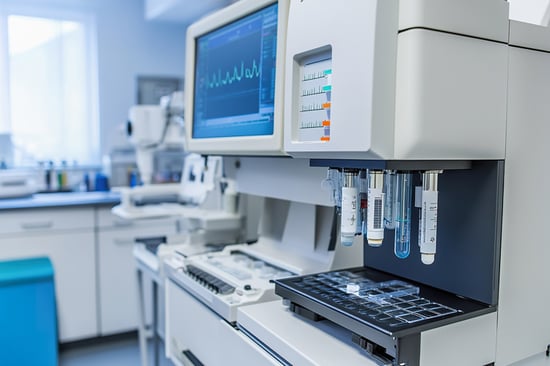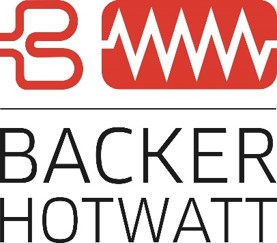How Automation, Miniaturization, and Artificial Intelligence Are Reinventing the Lab
Laboratories and field teams are no longer satisfied with heavy, single-purpose devices. Today’s customers want smaller, faster, and smarter instruments that can operate with minimal human intervention. Three converging trends—automation, artificial intelligence (AI), and miniaturization—are reshaping how scientific instruments are designed, built, and used.
For years, scientific labs have been comfortable operating with manual pipetting, bench-top gadgets, and single-use instruments that require hands-on attention. But just as scientific discovery rapidly evolves, so does the demand for more advanced instruments that are:
instruments that require hands-on attention. But just as scientific discovery rapidly evolves, so does the demand for more advanced instruments that are:
- Smaller: Shrinking footprint, lighter, more portable
- Faster: Quicker ramping, rapid responses, high throughput
- Smarter: Adaptive, data-driven, with minimal human intervention
The transformative trends in scientific instrumentation are not just enhancing features; they’re redefining instrument architectures, business models, and how labs are organized and operate.
Automation: From Human Pipettes to Robotic Work Cells
Automation now permeates every corner of modern labs. Robotic arms shuttle plates, liquid-handling robots dispense reagents, and workflow software orchestrates multistep protocols across different instruments. The appeal is obvious: higher throughput, reproducibility, and lower labor costs.
Yet the real future lies in “self-driving labs” or modular “science factories”—systems where instrument modules, robotics, and AI are composable and reconfigurable. Researchers are already prototyping architectures linking instrument modules and AI-managed workflows for fully autonomous experimentation.
But automation can present complex design, management, and manufacturing challenges, such as integrating diverse instrument vendors, error handling, and meeting flexible workflows.
Miniaturization: Lab in the Palm of Your Hand
Miniaturization enables new use cases: portable diagnostics, field analytics, microfluidic assays, and bench-dense modular layouts. Lab-on-chip and MEMS technologies shrink entire workflows—mixing, separation, detection—into chips measuring millimeters.
For instrument makers, miniaturization means newer constraints: thermal management, signal-to-noise tradeoffs, and packaging complexity. But the reward is more scalable, modular instrument architectures.
AI: Embedding Intelligence into Instruments
AI is transforming instruments from simple machines into perceptive systems. Whether it’s real-time anomaly detection, method optimization, or predictive maintenance—AI unlocks smarter, adaptive behaviors.
Embedding AI onto devices (edge inference) is rapidly becoming feasible via model compression, early-exit networks, or cascaded inference. The integration of AI, however, presents significant challenges around data quality, calibration drift, model explainability, and regulatory trust.
Compact, Intelligent Thermal Control Systems
Precise thermal control is essential across a broad spectrum of laboratory research applications. Whether it’s chromatography, sample incubation, vapor desorption, or environmental simulation, heaters are integral to achieving consistent, accurate results.
As instruments shrink and become more intelligent, thinking of the heating component as “just a heater” or an afterthought in the design process, doesn’t fly. As a thermal systems partner, Backer Hotwatt engages early in the design process to deliver compact, intelligent heating solutions that integrate sensors, diagnostics, and feedback control.
With a portfolio spanning micro-cartridge heaters, foil heaters, tubular heaters, and more, Hotwatt enables instrument manufacturers to achieve precise thermal control across analytical, test, and safety applications.
The increased demand for smaller, smarter instruments means increased demand for intelligent, micro heating modules that:
- Reach setpoints quickly, hold temperatures precisely, and respond predictably to remote commands.
- Are reliable, low maintenance, and robust to support automated systems often run unsupervised for extended periods.
Outlook: What to Expect Next
The growing demand for smaller, smarter instruments continues to drive the need for compact, intelligent heating modules that:
- Deliver modular, application-specific performance
- Operate as integrated subsystems with onboard sensing, diagnostics, and communication interfaces rather than as basic resistive elements
AI-driven thermal management and predictive servicing will reduce downtime and energy costs. Meanwhile, improvements in materials and microfabrication will continue to push thermal performance into ever-smaller packages—letting high-performance thermal control appear in handheld and wearable scientific devices.
The trends driving innovation in the scientific instruments market, in turn, make heating technology a critical design factor and competitive differentiator for instrument manufacturers.
Evaluating a Manufacturing Partner
An important factor to be aware of: the best time to consider the heating source when developing a new instrument is early in the design process—before any design constraints or limitations arise.
With that, selecting the right heating partner is crucial for scientific instrument manufacturers striving for precision, efficiency, and reliability. A thorough evaluation goes beyond specs, ensuring the manufacturer delivers performance, integration flexibility, safety, and dependable support for today’s demanding applications. Use this checklist to guide your decision-making and safeguard instrument outcomes.
Manufacturing Partner Evaluation Checklist
- Performance & Precision
Evaluate if the heater meets your exact temperature range, stability, ramp rate, and response time needs—especially for instruments requiring tight control and reproducibility. - Integration & Form Factor
Assess mechanical fit, mounting options, and thermal coupling with your device. Integration should support your space, geometry, and sensor needs, minimizing assembly complexity. - Control & Intelligence
Look for compatibility with your system’s controls, modern digital interfaces, built-in diagnostics, and readiness for smart functions or automation. - Energy Efficiency
Confirm the heater’s design delivers fast response, limits energy losses, and supports efficient power control—critical for cost savings and portable instrument performance. - Reliability & Environment
Ensure the heater is built for your environment: durable for vibration, cycling, and chemical exposure, and compatible with sensitive or challenging settings. - Compliance & Safety
The best partners deliver certified products with integrated safeguards and clear pathways to safety and regulatory compliance. - Scalability & Support
Consider their ability to customize, guarantee consistent supply, provide technical documentation, and support your product through its full lifecycle. - Cost–Performance Balance
Weigh purchase price against long-term efficiency, integration simplicity, and reliability to ensure overall value—not just the lowest upfront cost.
This checklist helps you make a smart, well-rounded choice when selecting a heating solutions manufacturing partner. By evaluating factors like performance, integration, control features, efficiency, reliability, compliance, support, and total value, you position your scientific instruments for consistent quality and long-term success—ensuring every solution is a precise fit for your needs.
To get a more detailed checklist—one that includes specific criteria to assess—download this comprehensive Heating Solutions Manufacturing Partner Evaluation Checklist.
The Backer Hotwatt Difference
Backer Hotwatt designs and manufactures custom heating solutions to help manufacturers and product development teams stay nimble and innovate with smaller, more efficient, and adaptable instruments. Our team members—who thrive on tackling complex heating challenges—can help engineer the best heater for your laboratory or analytical instruments application.
Backer Hotwatt helps you solve application-specific heating challenges; challenges that other vendors often don’t have the interest or capability to tackle. We design intelligent thermal systems for highly automated, miniaturized instrumentation, enabling industry-leading innovation and discovery. Contact an engineer today to set up an exploratory consultation.
Download the Heating Solutions Manufacturing Partner Evaluation Checklist here as well.
